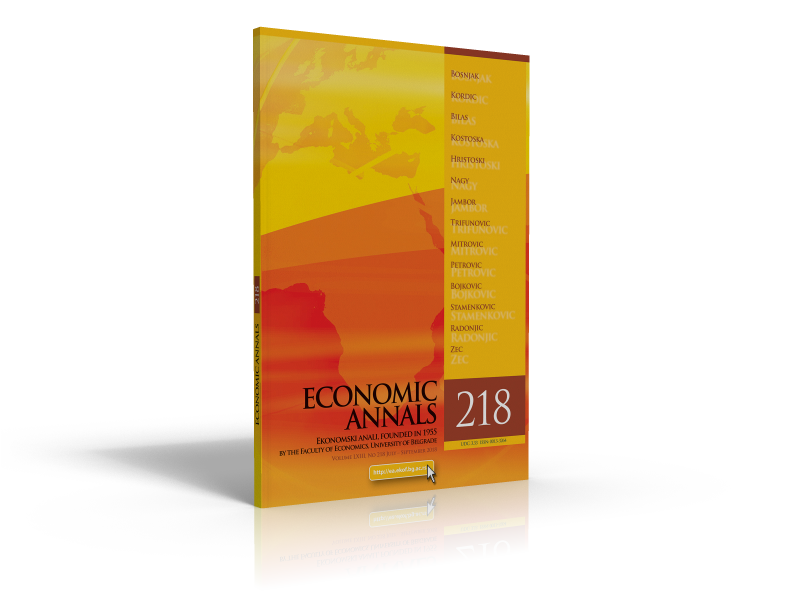DETERMINANTS OF FINANCIAL EUROISATION IN A SMALL OPEN ECONOMY: THE CASE OF SERBIA
##plugins.themes.bootstrap3.article.main##
##plugins.themes.bootstrap3.article.sidebar##
Bošnjak Mile
Kordić Gordana
Bilas Vlatka
Kordić Gordana
Bilas Vlatka
Abstract
This paper examines the phenomenon of financial euroisation in Serbia, focusing on the liability side of the banking system. A time series model is estimated and evaluated using a monthly data sample from January 2007 to January 2016 for Serbia. The results of this paper show that the mean pattern of financial euroisation in Serbia is determined by the exchange rate, inflation, and the interest rate differential. Financial euroisation in Serbia is found to be volatile and to exhibit a clustering pattern. Of the estimated and tested models the ARCH (1) model is found to be best suited to explain the volatile behaviour pattern of financial euroisation in Serbia.
##plugins.themes.bootstrap3.article.details##
Keywords
financial euroisation, ARCH, volatility, Serbia
JEL Classification
C13, C58, F31, F32
Issue
Section
Articles
How to Cite
Mile, B., Gordana, K., & Vlatka, B. (2018). DETERMINANTS OF FINANCIAL EUROISATION IN A SMALL OPEN ECONOMY: THE CASE OF SERBIA. Economic Annals, 63(218), 9-22. https://doi.org/10.2298/EKA1818009B
How to Cite
Mile, B., Gordana, K., & Vlatka, B. (2018). DETERMINANTS OF FINANCIAL EUROISATION IN A SMALL OPEN ECONOMY: THE CASE OF SERBIA. Economic Annals, 63(218), 9-22. https://doi.org/10.2298/EKA1818009B

